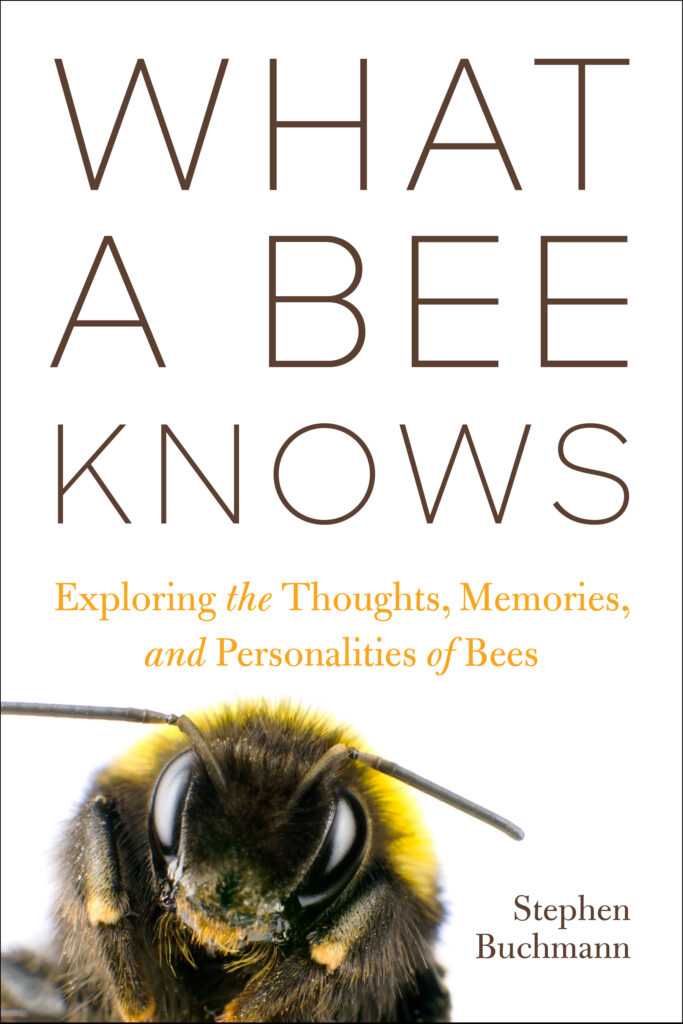
By Stephen L. Buchmann
Island Press, 2023
296 pages, hardcover, $30
I love the buzzing sounds of pollinators at work in my garden. Sometimes I wonder how far they’ve flown, and whether they have a mental map of the flowers in the fields and gardens around me. In “What a Bee Knows,” entomologist Stephen Buchmann invites us to expand our curiosity and ask deeper questions, like do bees dream? Can they use tools? If you teach them to solve a maze, will they remember it three days later?
Those are interesting questions to ask of an insect with a brain no bigger than a poppy seed. Yet bees have “an extraordinary ability to think, solve problems, learn, remember other bees, fly to and from their nests, and interact with flowers during their foraging trips,” writes Buchmann. In this book he takes us into the labs and out in the field with scientists who study bee neurobiology.
One chapter dives into how bees perceive the plants, flowers, and landscapes around them. Their sense of smell is like ours, says Buchmann, though they use antennae rather than noses. Bees have color vision and learn to associate sweet nectar with color. They don’t have ears, but they can feel vibrations through membranes in their legs and antennae. As for tastebuds, bees detect flavors through their front feet rather than their tongues.
My favorite chapters focused on bee learning and memory. In early studies, scientists demonstrated that bees learned to associate colored cards with sugar-water rewards. More recently, scientists have tested the learning ability of bees by placing them in mazes. Bees must navigate their way through turns, while at the same time paying attention to colors, scents, and textures before they reach a reward. Bees learned to associate colors with navigation cues: a blue card means turn to the right and a green one means turn left. Some scientists have even taught bumblebees to pull strings to get food — a trick the trained bees passed on to other bees.
The final three chapters explore questions about dreaming, feeling, and cognition. We usually see bees working, says Buchman, noting that many bees are a bit lazy. They spend their time sleeping — some while hanging by their front legs. Honeybees sleep about the same number of hours people do. Those who study their sleep describe three stages, including an early stage during which there is much flipping of antennae.
For both bees and humans, sleep is essential for consolidating memories. Deprived of sleep, honeybees won’t remember navigational tasks they learned during the day. And those memories are what they use to create mental maps for foraging.
Reading this book reminded me of lunchtime discussions with my entomology professor, and there were sections that felt like a seminar, complete with diagrams of ganglia projected on the whiteboard. I like how Buchmann concludes with a discussion of threats to bees, a list of 10 things to do to help pollinators and their plants, and extensive notes for readers who want to learn more.
– Sue Smith-Heavenrich, Candor, New York
This review was originally published in the fall 2024 issue of The Maine Organic Farmer & Gardener. Browse the archives for free content on organic agriculture and sustainable living practices.
